James Harlan Chapter, NSDAR
Mount Pleasant, Iowa
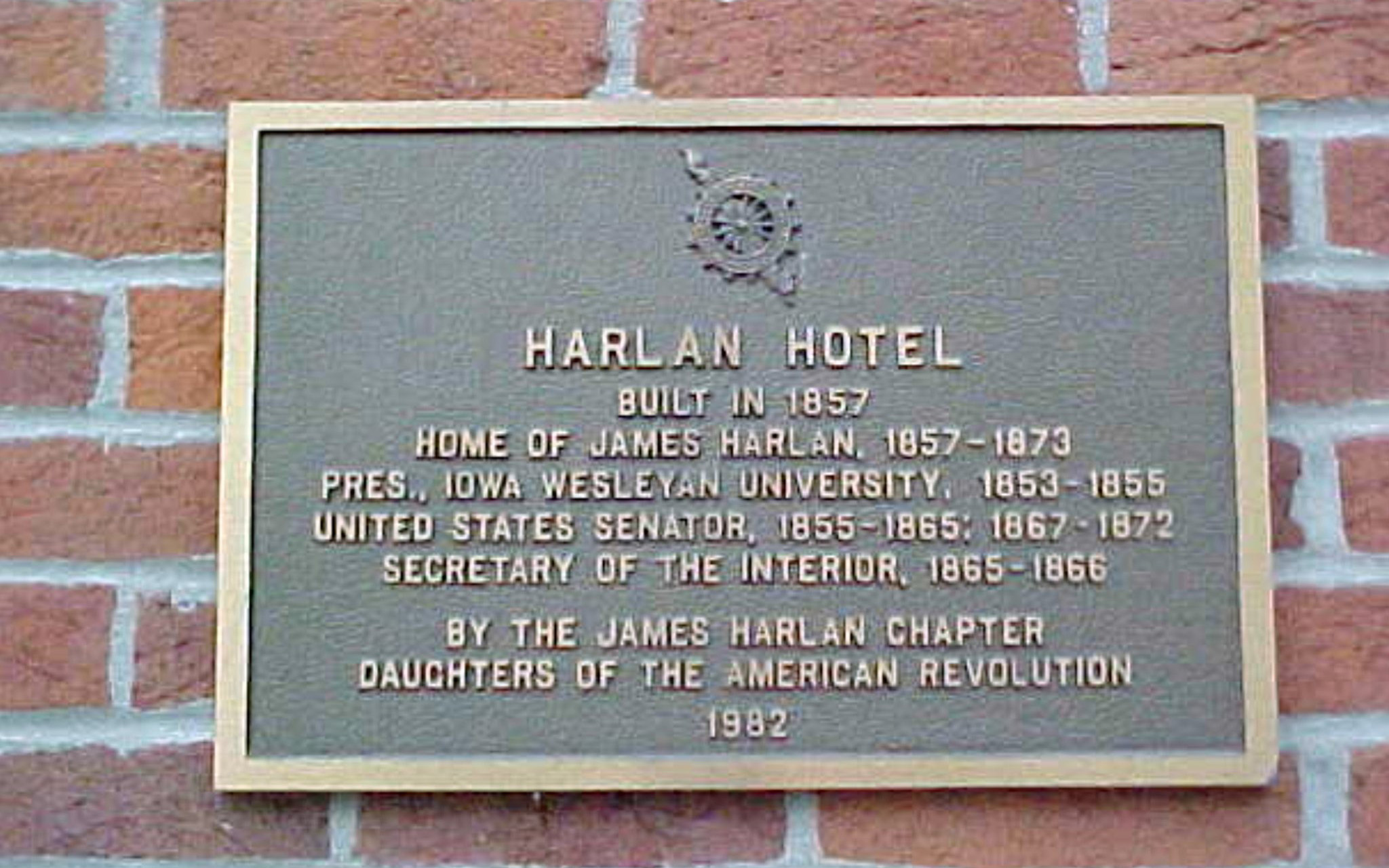
Harlan Hotel, Home of Senator James Harlan, 1857 - N. Jefferson Street, Mount Pleasant.
The Harlan Hotel was originally the James A. Harlan house, built in 1857. He lived in it for 16 years during his career in government. Though it is now a hotel, the central section that was the original house contains memorabilia from Harlan's life and the history of Mount Pleasant. The James Harlan Chapter, NSDAR, presented a plaque in 1982, honoring Harlan for his many accomplishments. The marker is located in Mount Pleasant at 122 North Jefferson Street.
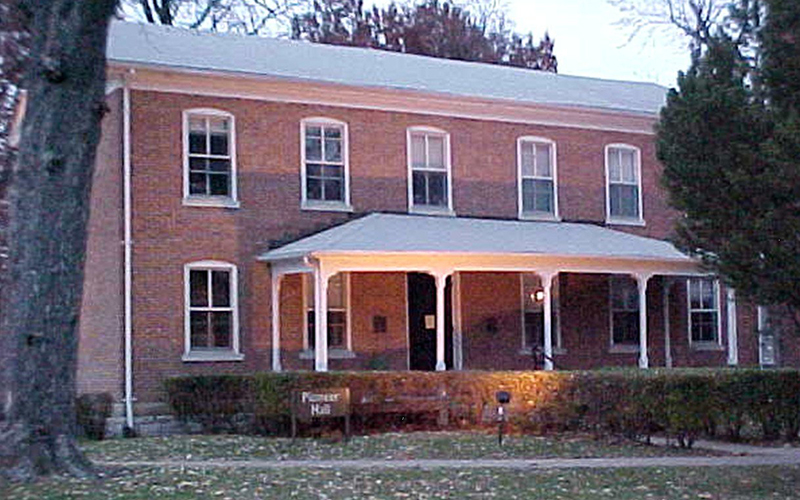
Pioneer Hall, Iowa Wesleyan Established, 1842 - Iowa Wesleyan University Campus, Mount Pleasant.
Founded in 1842, Iowa Wesleyan College is claimed to be the first college established west of the Mississippi River. This is disputable, but it is the oldest college in Iowa. Sponsored by the Methodist Church, it was first known as Mount Pleasant Collegiate Institute. In 1849, it was renamed Iowa Wesleyan University; and then in 1911, the college became known as the Iowa Wesleyan College. Pioneer Hall, where the James Harlan Chapter, NSDAR, marker was mounted in 1926, has been in continual use since 1845. Gold-domed Old Main was added to the campus in the 1850s. The DAR marker is located in the northern section of Mount Pleasant in Henry County, Iowa.

First Court House in Iowa, 1839 - Mount Pleasant Central Park.
In 1839, just one year after the Territory of Iowa was established, the people of Mount Pleasant built a new courthouse - the first one in the state. The commissioners did not actually occupy the building until their regular meeting on April 6, 1840, but from then on, it was in continual use until 1872. A bronze plaque, mounted on a native red granite boulder, marks the site where the Henry County Courthouse once stood. The marker is located south of the fountain in Central Park. The city park is on U.S. Highway 34 in the center of Mount Pleasant, Iowa.
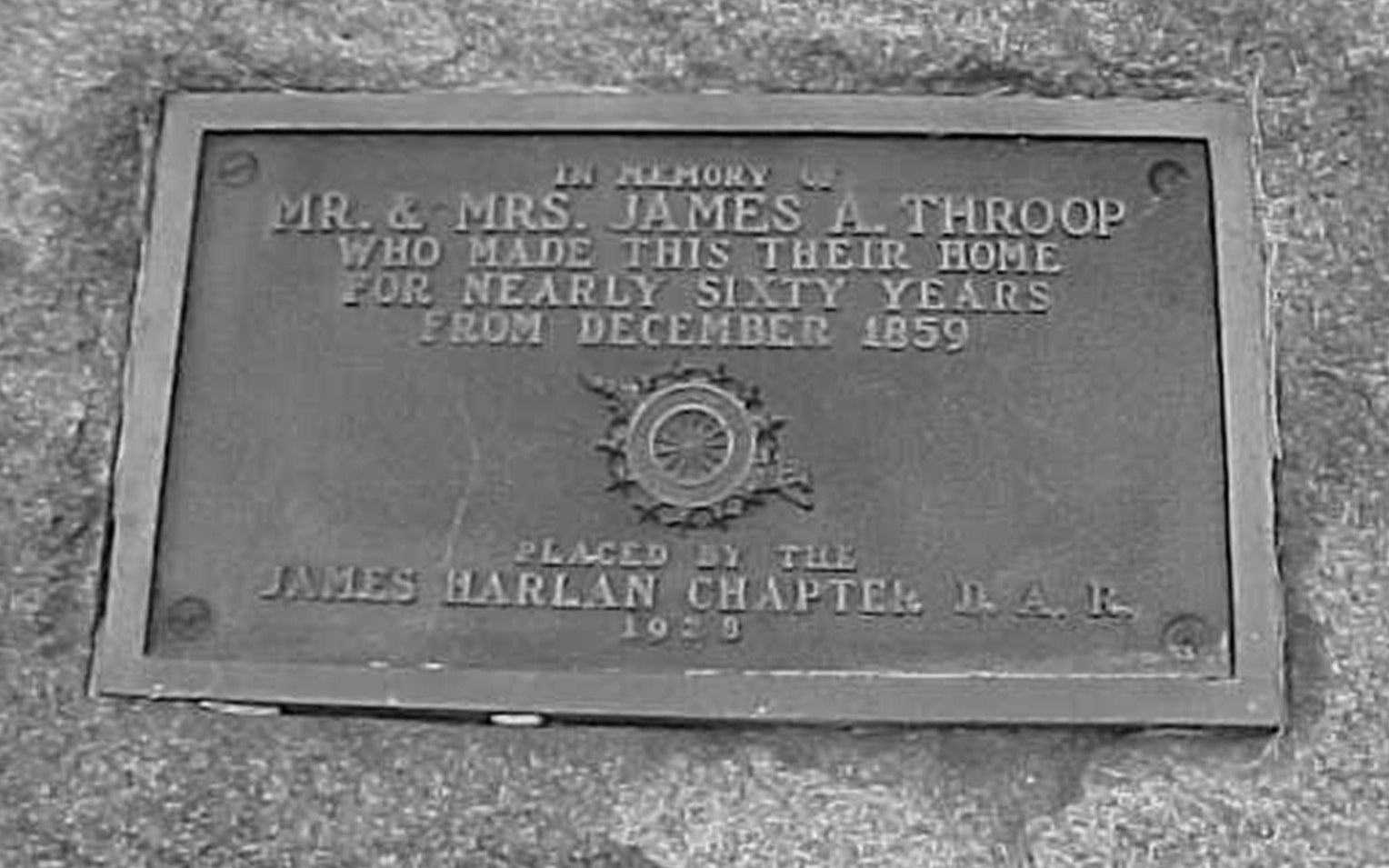
Home of James A. Throop, 1859 - Saunders Park, Mount Pleasant.
James A. Throop was an outstanding early newspaper editor in Mount Pleasant. In remembrance of his good works, the James Harlan Chapter, NSDAR, marked the site of his home with a bronze plaque in 1928. The marker is located in Saunders Park south of Clay Street in Mount Pleasant, Iowa.
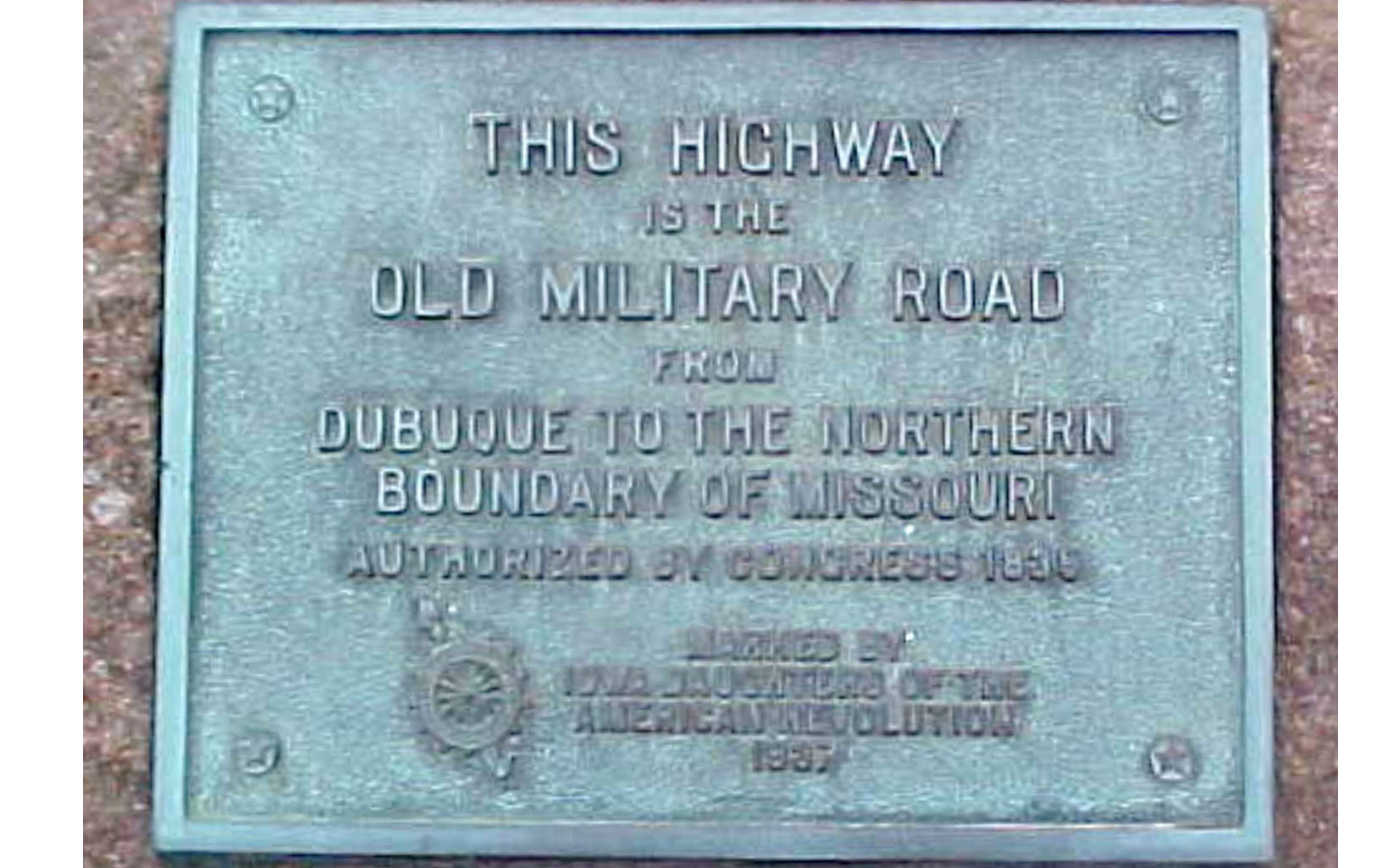
Old Military Road - West side of Central Park, Mount Pleasant.
Created in 1839, the Old Military Road connected Dubuque to the northern boundary of Missouri.
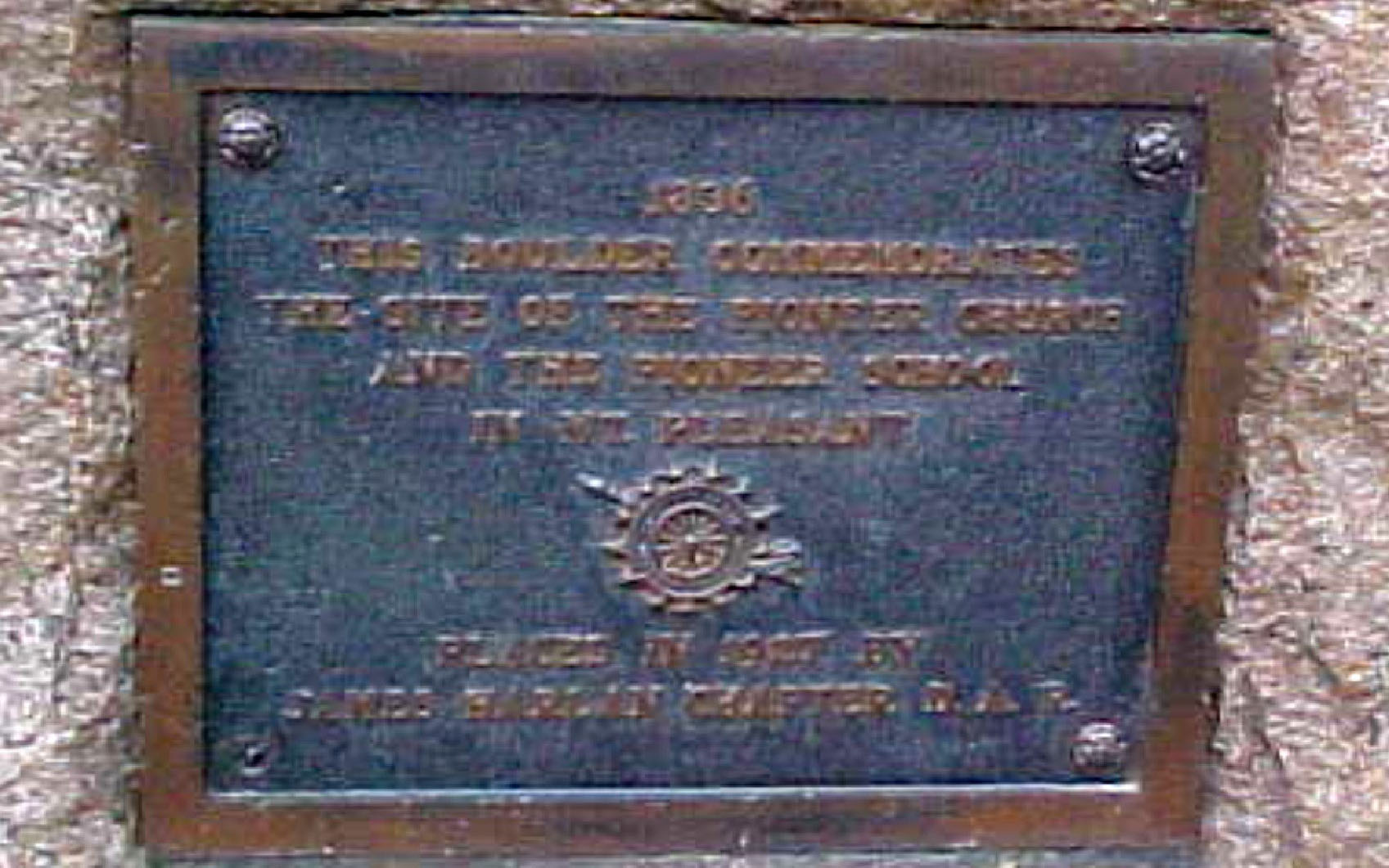
Pioneer Church and School, 1836 - Entryway to Saunders Park, Mount Pleasant
In 1836, a pioneer church and pioneer school were built in Mount Pleasant. In commemoration, a bronze plaque placed on a boulder now stands at the original location; it was placed there by our chapter in 1928. The marker is located in Saunders Park, at the corner of South Van Buren and West Clay Street in Mount Pleasant, Iowa.

First Home of Presley Saunders, Founder of Mount Pleasant - Saunders Park, Mount Pleasant.
In 1834, Presley Saunders built the first home in Mount Pleasant, Iowa. It was located in the Saunders Park area before Iowa became a state. A bronze plaque was placed in the northwest corner of Saunders Park, at South Van Buren and West Clay Street to commemorate this event.
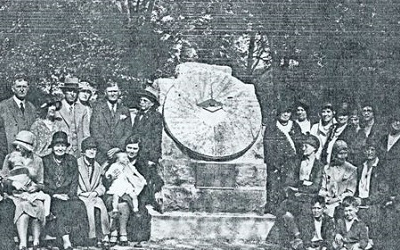
First flour, corn, and sawmill in Lowell, Iowa
A French Buhr Millstone, brought to Henry County in 1837, marks the site of the first flour mill in Iowa. It was built on the Skunk River in 1838 and it was operated until 1901. On the other side of the Skunk River was the first corn and sawmill which was constructed in 1837. The sawmill operated until 1911. In 1930, the Mount Pleasant James Harlan Chapter, NSDAR, and the New London John See Chapter, NSDAR, placed a marker in the city park at Lowell, Iowa.